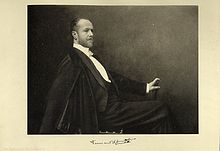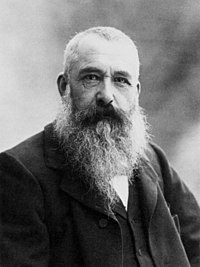My brief summary of impressionism: Impressionism movement started in the 1860s and affected almost every art, especially painting and music, in Europe, USA and Australia. Impressionists were united in rebelling
against academic conventions to try to depict their surroundings with
spontaneity and freshness, capturing an ‘impression’ of what the eye
sees at a particular moment, rather than a detailed record of
appearances. Impressionists reached their aims by reflecting the visual impressions of light and colors
Impressionism. A movement in art, generally in painting, that originated
in France in the 1860s and had an enormous impact on Western art over
the following half-century. As an organized movement, Impressionism was
purely a French phenomenon, but many of its ideas and practices were
adopted in other countries, and by the turn of the century it was a
dominant influence on avant-garde art in Europe (and also in the USA and
Australia). In essence, its effect was to undermine the authority of
large, formal, highly finished paintings in favour of works that more
immediately expressed the artist's personality and response to the
world.
The Impressionists were not a formal group with clearly
defined principles and aims; rather they were a loose association of
artists linked by some community of outlook who banded together for the
purpose of exhibiting, most of them having had difficulty in getting
their work accepted for the official
Salon
(they held eight group shows, all in Paris, in 1874, 1876, 1877, 1879,
1880, 1881, 1882, and 1886). The main figures involved were (in
alphabetical order)
Cézanne,
Degas,
Manet,
Monet, Camille
Pissarro,
Renoir, and
Sisley; Berthe
Morisot, too, played a central role in the movement. Frédéric
Bazille was part of the original nucleus but died tragically early in 1870; the minor figures included Armand
Guillaumin,
who was the last survivor of those who showed in the 1874 exhibition,
dying in 1927. Monet, Renoir, and Sisley met as students, and the others
came into contact with them through the artistic café society of Paris.
There were friendly ties of varied degrees of intimacy linking each of
them to most of the others, but Degas and even more Manet were set
somewhat apart because they came from a higher stratum of society than
the others, and the artists' commitment to Impressionism varied
considerably (Manet was much respected as a senior figure, but he never
exhibited with the group). They were united, however, in rebelling
against academic conventions to try to depict their surroundings with
spontaneity and freshness, capturing an ‘impression’ of what the eye
sees at a particular moment, rather than a detailed record of
appearances. Their archetypal subject was landscape (and painting out of
doors, directly from nature, was one of the key characteristics of the
movement), but they treated many other subjects, notably ones involving
everyday city life. Degas, for example, made subjects such as horse
races, dancers, and laundresses his own, and Renoir is famous for his
pictures of pretty women and children.
In trying to capture the
effects of light on varied surfaces, particularly in open-air settings,
the Impressionists transformed painting, using bright colours and
sketchy brushwork that seemed bewildering or shocking to
traditionalists. The name ‘Impressionism’, in fact, was coined
derisively, when the painter and critic Louis Leroy (1812–85) latched
onto a picture by Monet,
Impression: Sunrise (1872, Mus. Marmottan, Paris), at the group's first exhibition, heading his abusive review ‘Exposition des Impressionistes’ (
Le Charivari,
25 Apr. 1874); he dismissed the group as a whole as ‘hostile to good
manners, to devotion to form, and to respect for the masters’. Although
the critical response to the Impressionists was not as one-sided as is
sometimes suggested, Leroy's attitude prevailed in conservative circles
for many years; for example, when Gustave
Caillebotte left his superb Impressionist collection to the French nation in 1894, Jean-Léon
Gérôme
wrote that ‘For the Government to accept such filth, there would have
to be a great moral slackening.’ However, by the the time of the final
exhibition in 1886 the Impressionists as a whole were starting to
achieve critical praise and financial success (helped by the dedicated
promotion of
Durand-Ruel),
and during the 1890s their influence began to be widely felt (by this
time the group had broken up and only Monet continued to pursue
Impressionist ideals rigorously).
Few artists outside France
adopted Impressionism wholesale, but many lightened their palettes and
loosened their brushwork as they synthesized its ideas with their local
traditions. It was perhaps in the USA that it was most eagerly adopted,
both by painters such as Childe
Hassam and the other members of
The Ten and by collectors ( Mary
Cassatt
helped to develop the taste among her wealthy picture-buying friends).
It also made a significant impact in Australia, with Tom
Roberts playing the leading role in its introduction. In Britain,
Sickert and
Steer
are generally regarded as the main channels through which Impressionism
influenced the country's art, but the differences between their work
shows how broadly and imprecisely the term has been used (at the time,
D. S. MacColl
commented that it was applied to ‘any new painting that surprised or
annoyed the critics or public’). For a few years around 1890, Steer
painted in a sparklingly fresh Impressionist manner, but his style later
became more sober; Sickert adopted the broken brushwork of
Impressionism (as did his followers in the
Camden Town Group),
but he used much more subdued colour, and he had a taste for quirky,
distinctively English subject matter. In contrast, the painters of the
Newlyn School
often painted out of doors in conscious imitation of the French and
used comparatively high-keyed colour, but they generally did not adopt
Impressionist brushwork. Accordingly, many authorities think that among
British artists, only Steer—and he only briefly—can be considered a
‘pure’ Impressionist.
In addition to prompting imitation and
adaptation, Impressionism also inspired various counter-reactions—indeed
its influence was so great that much of the history of late
19th-century and early 20th-century painting is the story of its
aftermath. The
Neo-Impressionists, for example, tried to give the optical principles of Impressionism a scientific basis, and the
Post-Impressionists began a long series of movements that attempted to free colour and line from purely representational functions. Similarly, the
Symbolists
wanted to restore the emotional values that they thought the
Impressionists had sacrificed through concentrating so strongly on the
fleeting and the casual.
IAN CHILVERS.
"Impressionism."
The Oxford Dictionary of Art.
2004. Retrieved
June 05, 2012
from Encyclopedia.com:
http://www.encyclopedia.com/doc/1O2-Impressionism.html
Claude Monet: (14 November 1840 – 5 December 1926) was a founder of French
impressionist
painting, and the most consistent and prolific practitioner of the
movement's philosophy of expressing one's perceptions before nature,
especially as applied to plein-air landscape painting.
The term Impressionism is derived from the title of his painting
Impression, Sunrise (
Impression, soleil levant).














